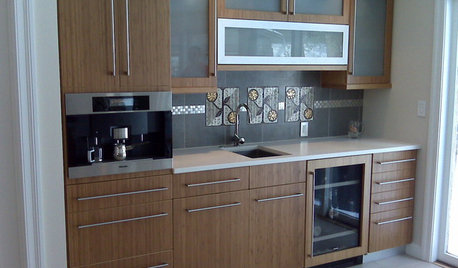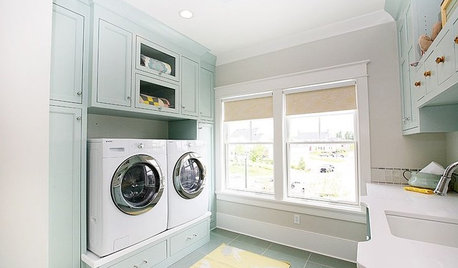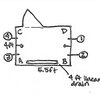Not much hot water?
bostonbean2
9 years ago
Related Stories

GREAT HOME PROJECTSHow to Switch to a Tankless Water Heater
New project for a new year: Swap your conventional heater for an energy-saving model — and don’t be fooled by misinformation
Full Story
SAVING WATER11 Ways to Save Water at Home
Whether you live in a drought-stricken area or just want to help preserve a precious resource, here are things you can do to use less water
Full Story
GARDENING GUIDESGreat Design Plant: Desert Marigold Cheers Up Hot, Dry Areas
Sunny but tough, this perennial thrives with little water and lots of sun
Full Story
KITCHEN DESIGNHot Ideas and Tips for Coffee and Tea Stations
Let options like drawer inserts and built-in coffeemakers percolate now, so your hot-drinks station can best serve holiday guests
Full Story
GREAT HOME PROJECTSHow to Add a Solar Water Heater
Lower energy bills without a major renovation by putting the sun to work heating your home’s water
Full Story
GREEN DECORATINGEasy Green: Big and Small Ways to Be More Water-Wise at Home
These 20 tips can help us all make the best use of a precious resource. How do you save water in summer?
Full Story
GREEN BUILDINGWater Sense for Big Savings
Keep dollars in your pocket and preserve a precious resource with these easy DIY strategies
Full Story
LAUNDRY ROOMS8 Tips for Cleaner, Greener Laundry
Let go of harsh chemicals and hot water, and go easy on your clothes, your wallet and the planet
Full Story
GARDENING AND LANDSCAPING8 Ways to Beautifully Integrate an Outdoor Hot Tub
Harmonize your hot tub with your landscape for good looks and great relaxation
Full Story
GARDENING AND LANDSCAPING12 Naturally Beautiful Hot Tubs
Prefer a no-plastic look for your patio or yard? Wood, stone and concrete make these hot tubs fit right in with nature
Full Story








dadoes
jakethewonderdog
Related Professionals
Boise Plumbers · Milford Plumbers · Citrus Park Kitchen & Bathroom Remodelers · 93927 Kitchen & Bathroom Remodelers · Buffalo Grove Kitchen & Bathroom Remodelers · Folsom Kitchen & Bathroom Remodelers · Hickory Kitchen & Bathroom Remodelers · Kettering Kitchen & Bathroom Remodelers · Morgan Hill Kitchen & Bathroom Remodelers · Panama City Kitchen & Bathroom Remodelers · Terrell Kitchen & Bathroom Remodelers · Fairmont Kitchen & Bathroom Remodelers · Mountain Top Kitchen & Bathroom Remodelers · Ojus Kitchen & Bath Fixtures · Paradise Kitchen & Bath Fixturesbostonbean2Original Author
randy427
jakethewonderdog
bostonbean2Original Author
jakethewonderdog